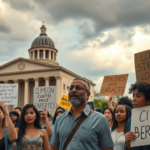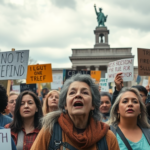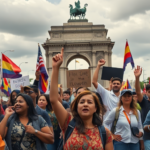Violence and Bullying Disrupt Sleep for LGBTQ+ Adolescents
A groundbreaking study published in the Journal of Adolescence has revealed the critical consequences of violence and bullying on the sleep health of LGBTQ+ adolescents across the United States. The research highlights that identity-related violence and gender-based bullying contribute significantly to sleep disturbances in these adolescents, while positive family support can serve as a buffer, improving sleep quality.
Research Highlights
The study sheds light on the experiences of cisgender sexual minority youth and gender minority youth, revealing varied impacts on their sleep health. Cisgender sexual minority youth reportedly face sleep difficulties due to gender-based victimization, family rejection, lack of a supportive gender-sexuality alliance, and absence of a trusted adult figure at school. In contrast, gender minority youth benefit from supportive environments where they can use bathrooms aligned with their gender identity, though they generally report more sleep problems compared to their cisgender counterparts. In particular, those assigned female at birth experience slightly more trouble falling asleep than those assigned male.
Dr. Will Beischel, PhD, the study’s corresponding author from Loyola University Chicago, underscores the significance of creating safe, affirming environments both at school and home for these adolescents. “Our work suggests that creating school and family environments that are safe and affirming could help LGBTQ+ adolescents sleep better, which is incredibly fundamental to positive health and development,” Beischel notes. This emphasizes the vital role of supportive social frameworks in alleviating minority stress and enhancing the resilience and well-being of LGBTQ+ youth.
Local Impact: Addressing Community Needs
For LGBTQ+ residents in the Rio Grande Valley and broader South Texas areas, this research has profound implications. The findings advocate for a reevaluation of the current social, educational, and familial structures to better support LGBTQ+ adolescents within these communities. This is particularly crucial in regions where traditional values may not always align with progressive inclusivity, making the establishment of supportive environments a challenging but necessary pursuit.
Community leaders and local officials have expressed the importance of addressing such disparities. Carmen Rodriguez, a counselor at an LGBTQ+ youth center in McAllen, TX, highlights the urgency: “This research provides the evidence needed to push for more robust support systems. LGBTQ+ youth are an integral part of our community; ensuring they receive the necessary care and protection is crucial for their development and for fostering a vibrant, inclusive society.”
Implications for Local Schools and Families
Schools and families in the community have an instrumental role in implementing change. Establishing gender-sexuality alliances and ensuring access to facilities that respect students’ gender identities can create a more inclusive educational environment. Furthermore, fostering open dialogues and educational workshops for both students and staff would promote broader understanding and acceptance.
Similarly, families are encouraged to build nurturing home environments that affirm the identity and concerns of LGBTQ+ youth. “The power of familial warmth cannot be understated when it comes to mental and physical well-being,” says Ana Caballero, a local family therapist. Caballero advocates for educational resources for parents that highlight the importance of empathy and acceptance.
Connecting with Past Local Efforts
The findings could enhance ongoing community efforts to reduce discrimination and promote mental health. In recent years, initiatives targeting youth mental health have gained traction in the RGV, with organizations such as the Texas Civil Rights Project advocating for LGBTQ+ youth rights. These existing campaigns provide an effective platform to expand support networks and increase awareness.
Future Prospects and Outreach
Looking forward, the research accentuates the potential benefits of legislative changes that promote inclusive policies at both school and state levels. Building on the momentum from recent advocacy efforts, local leaders could explore further collaborations with educational institutions to incorporate comprehensive support measures for LGBTQ+ students.
Several resources are available for those seeking more information and support. The RGV LGBTQ+ Center in Harlingen offers workshops and counseling services aimed at empowering individuals and fostering community connections. Residents are encouraged to reach out, engage, and participate in the efforts to create a more inclusive society.
In conclusion, this research reinforces the urgent necessity for affirming spaces and highlights the significant role community and institutional support play in the lives of LGBTQ+ youth. Recognizing and addressing these significant factors can uplift an entire generation, ensuring all members of the community have the opportunity to thrive and prosper. The commitment to such inclusivity not only benefits LGBTQ+ adolescents but enriches the broader fabric of society, promoting resilience and unity across diverse communities.
For more local resources and support, residents are encouraged to contact the RGV LGBTQ+ Center or consult with healthcare professionals specializing in adolescent mental health at local clinics and educational facilities.







